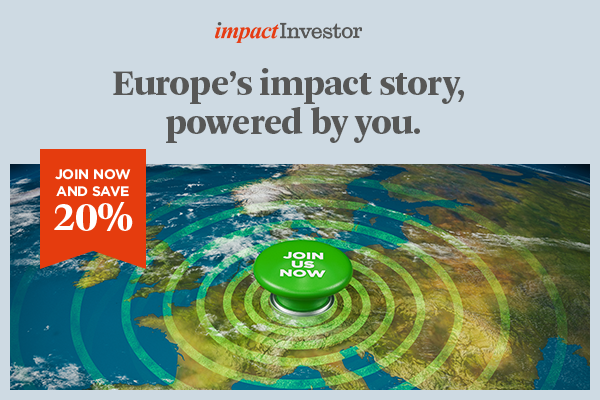A report published by Impact Europe looks into how companies and corporate organisations conduct impact investing as a key part of their sustainability strategies.

Impact investing by corporates could plug the $1.13trn (€2.7trn) funding gap facing social enterprises all over the world, a report by Impact Europe has concluded. The direct impact investment market in Europe is worth €80bn, with annual growth of 26%, according to the European Impact Investment Consortium, an alliance of key impact players focused on harmonising methodologies and data collection strategies.
Impact Europe, formerly EVPA, found that around 40% of its corporate membership are currently engaged in impact investing. This included both direct and indirect investments, but it excluded impact investments made through the firm’s treasury department.
“The report shows the potential of impact investing as a strategic approach to accelerate the mobilisation of corporates’ assets for positive impact,” said Roberta Bosurgi, chief executive officer of Impact Europe.
Many of the firms engaging in impact investing in the Impact Europe community “are pioneers in this space and have been a key force for change in their organisations,” Bosurgi said. “We hope this report helps them bring the topic to the boardroom and catalyse more corporate action for good.”
Gathering more data
Impact Europe said it plans to gather more data on the corporate impact investing market in the coming months as stakeholders, ranging from consumers to governments and investors, “have become increasingly vocal in demanding that companies adopt sustainable and responsible practices to solve global social and environmental challenges”.
While sustainability strategies are often linked to benefits such as talent acquisition, retention and a social license to operate, the report highlighted what it called “additional, unique benefits” for investees and investors of corporate impact investing.
These include adopting an innovative and holistic strategy, working with new stakeholders able to deliver fresh insights such as impact entrepreneurs, and balancing impact and profit.
Sanofi, IKEA
Impact Europe looked at the various ways in which a company can engage in impact investing. This can be done through an internal team, such as a business unit or an existing corporate venturing arm. One example of this is the French company Sanofi, which started impact investing from within the company, rather than set up a separate fund.
The IKEA Social Entrepreneurship on the other hand was set up as a separate vehicle, allowing it to focus on social entrepreneurship initiatives after it was given a separate identity from its Swedish parent company.
Companies can also start their impact journey through an intermediary, by channelling money towards a third party who deploys it as impact investments. The US payments giant PayPal opted for impact investing through its treasury department, positioning impact at the heart of its company.
The report also provides companies with five key steps to get started on their impact journey. These range from cultivating the right mindset to choosing the right strategy, engaging relevant stakeholders, establishing structures and finally, investing.






